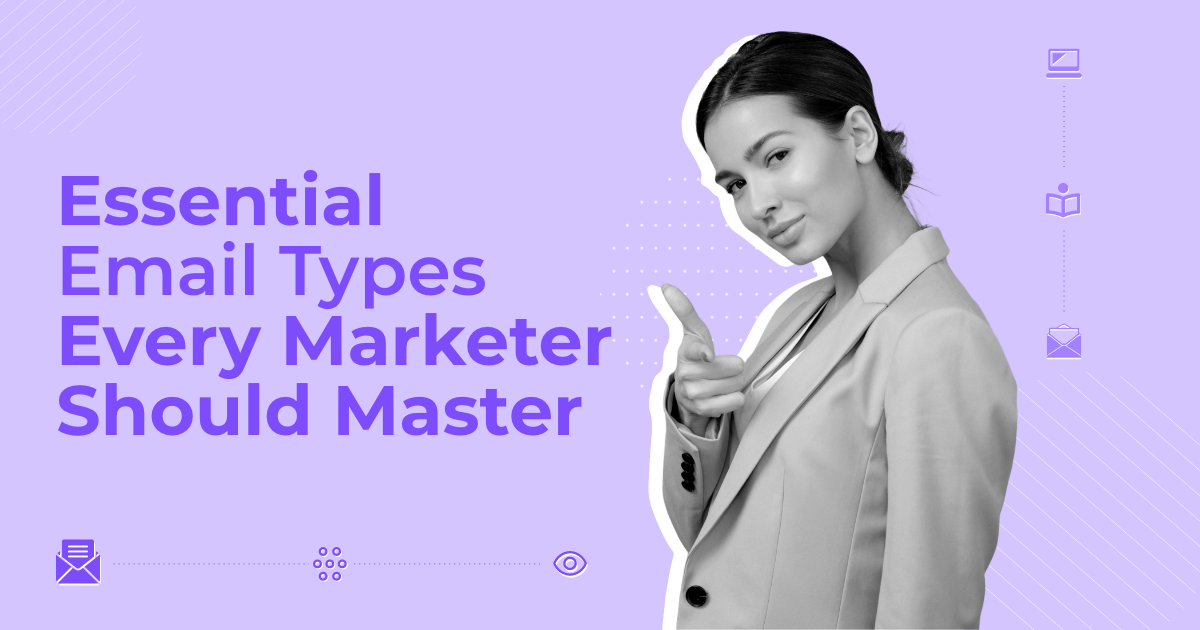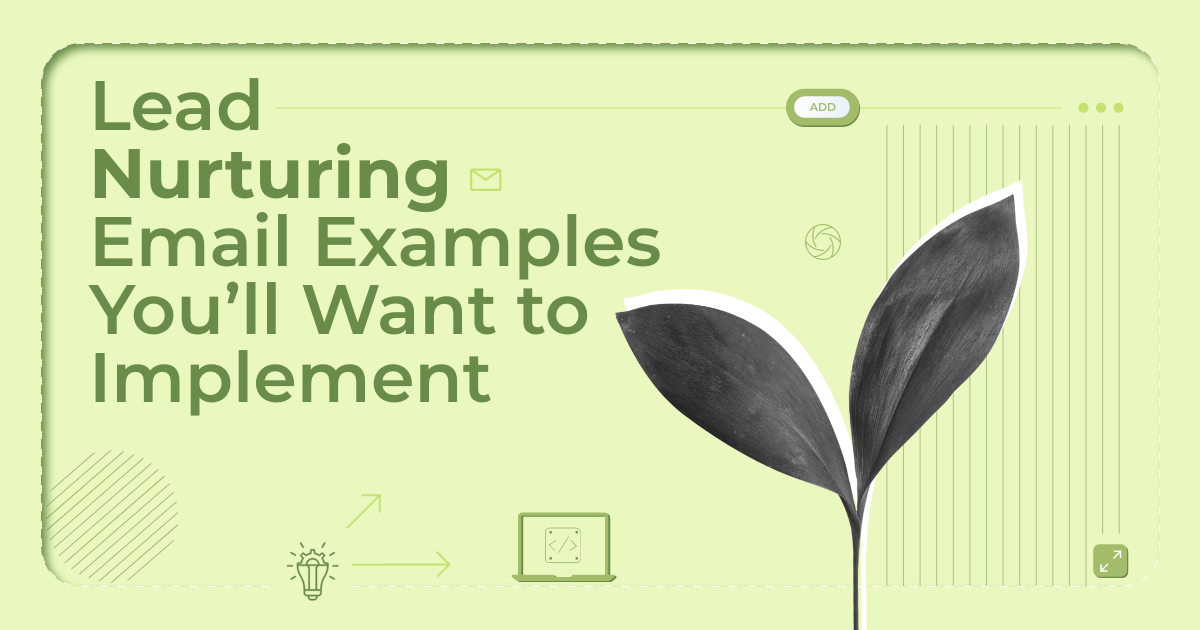
Lifecycle Emails: Benefits, Types & Examples
Imagine your customer as a solo traveler, landing in a new city—your brand. They’re curious and excited, but a little lost, too. Now, imagine there’s a helpful guide who meets travelers at the gate, maps out their journey, and makes every step feel personal.
That guide? It’s your lifecycle emails.
From the first welcome email to the final re-engagement campaign, they guide the customer throughout their journey with your brand offering value and encouraging action.
In this post, we’ll walk through some of the most popular lifecycle email types for every stage, including examples and pro tips to help you craft your own.
Send the right email, at the right time
Craft and schedule converting lifecycle emails with Moosend.
Start freeWhat Is Lifecycle Email Marketing?
A lifecycle email marketing strategy focuses on delivering personalized emails to prospects and customers based on the stage of the customer journey they’re in with a brand—from awareness to loyalty.
In most cases, lifecycle emails are automated. Marketers use email automation software like Moosend or Constant Contact and set time-based or behavior-based triggers. For example, a welcome email is delivered immediately after the first signup.
Some lifecycle emails can be manual. Small businesses with few contacts in their email list sometimes use more hands-on email marketing tactics compared to larger brands. To scale up, they eventually resort to dedicated services.
Lifecycle Email Benefits
Here are the benefits of a lifecycle email marketing strategy, when carried out effectively:
- Customer engagement: Sending tailored messages to your target audience at the right time boosts interaction and engagement with your brand—not just when they buy, but post-purchase, too.
- Conversion rates: Prospects and customers are more likely to convert when the email is relevant to their stage in the customer journey.
- Customer lifetime value: When customers receive emails that consistently resonate with their needs and interests, they’re more likely to complete repeat purchases.
- Retention and loyalty: Lifecycle emails optimize the customer experience encouraging long-term loyalty.
- Efficiency: Since most lifecycle emails are automated, they help boost productivity, engagement, and conversions without the need for manual effort.
To reap all those benefits, you need a well-crafted plan. Knowing your ideal customer profile (ICP) and buyer personas is essential to deliver the right emails at the right time—with content that will resonate with their pain points and needs, speaking their own language.
Customer Life Cycle Stages
You’ve probably heard of awareness, consideration, and conversion stages. Depending on your industry, you might be using different or additional terms. But they all come down to this: meeting potential and existing customers where they are.
Here’s a model that’s well-suited for lifecycle emails:
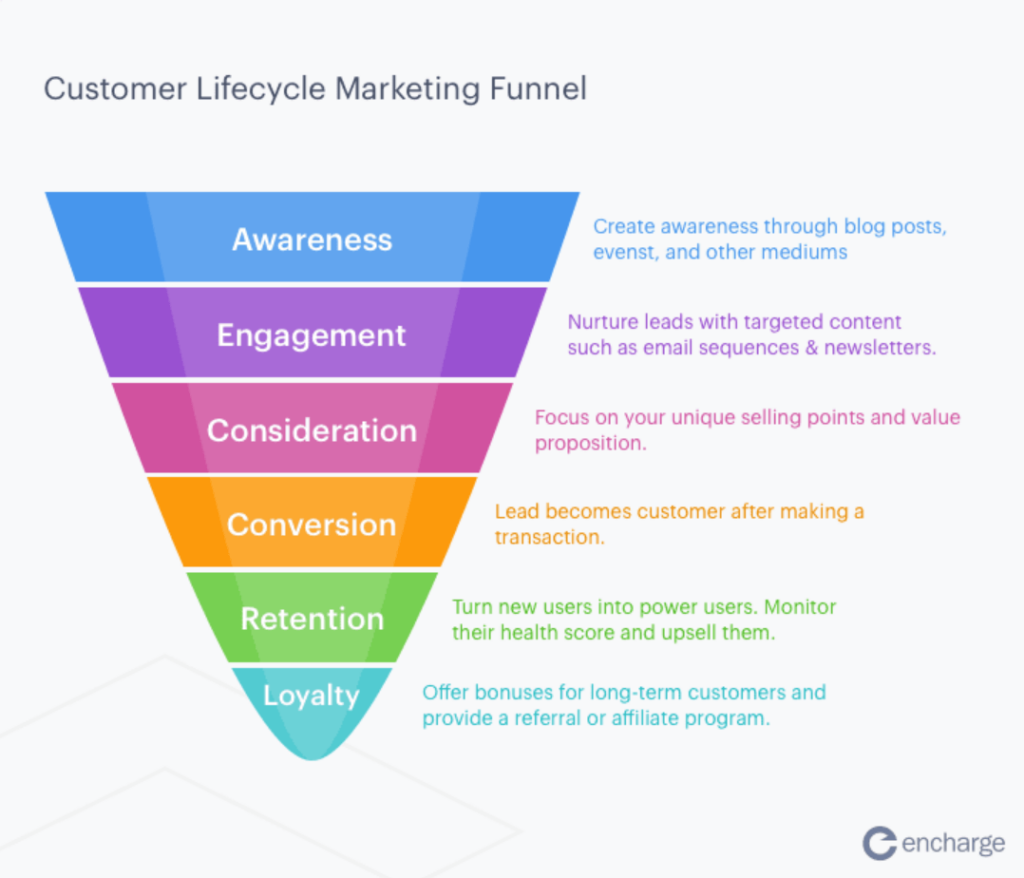
In email marketing terms, the awareness stage begins at the opt-in. A visitor or prospect signs up to an email list to receive communications, request a free trial, or download a resource.
With proper nurturing, prospects gradually engage more with your brand and wonder if you can bring them value. During the consideration stage, they actively research your offerings—and likely compare you with competitors.
You know what conversion means: the customer finally makes a purchase. But their journey doesn’t end there. The retention stage requires ongoing effort. Email communications should now focus on maintaining a strong relationship built on trust.
Finally, the loyalty stage ensures that your best customers remain engaged and enthusiastic. Loyalty fuels steady revenue and word-of-mouth referrals. And that’s what keeps a business thriving.
Customer lifecycles should be viewed as dynamic, not static. For example, an existing customer might re-enter the consideration and purchase stages when exploring a new product or service.
That’s why eCommerce email marketing software supported by tagging systems and real-time behavioral data is essential for delivering the right content at the right time across different stages.
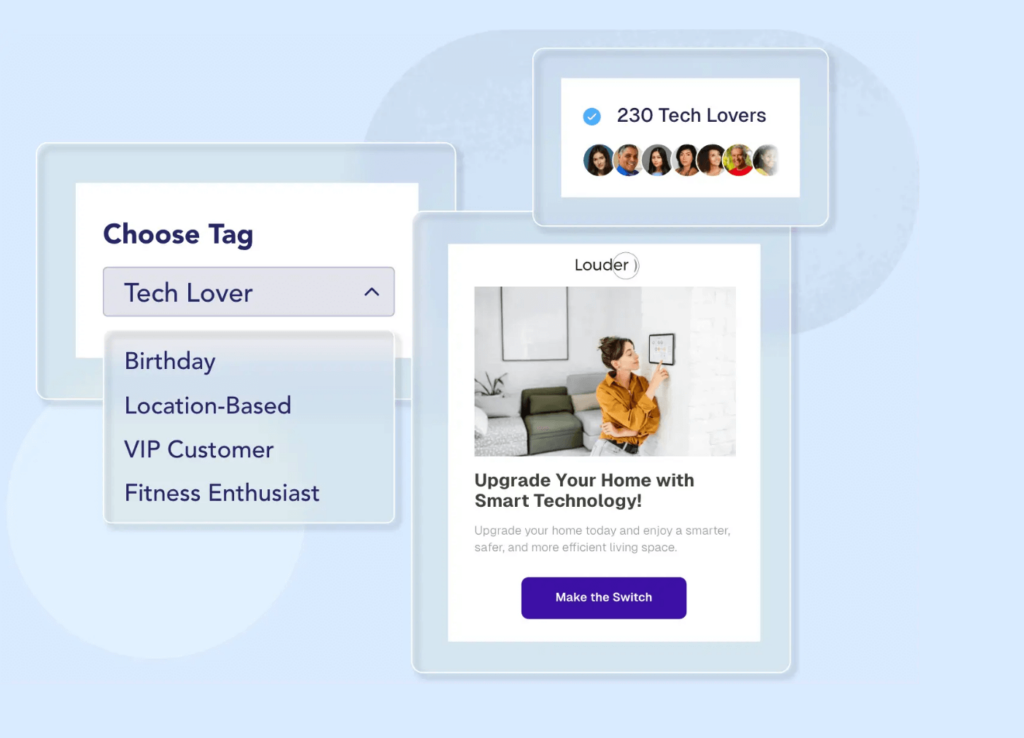
Popular Lifecycle Email Types
Here are some of the most popular lifecycle emails a business can send at each stage. Each one serves a common goal—address the needs and questions that arise as prospects and customers interact with your brand helping them further down the funnel:
| Lifecycle Stage |
Email Types |
|
Awareness |
Welcome emails, educational content, lead magnet delivery |
|
Engagement |
Product tips, event invitations, interactive emails |
|
Consideration |
Customer testimonials, comparison guides, free trials/demos |
|
Conversion |
Abandoned cart emails, product recommendations, limited-time offers |
|
Retention |
Onboarding emails, milestones, renewal/replenishment reminders, cross-sell/upsell |
|
Loyalty |
Referral invitations, loyalty programs, VIP access |
Transactional emails, those triggered by customer actions, can also be considered part of the lifecycle. Examples include order confirmations or password reset emails, which offer reassurance at key moments in the journey.
Some email types span multiple stages. Educational content supports both awareness and retention and product recommendations may appear during purchase and retention. Plus, re-engagement emails can target loyal customers who’ve gone quiet, or prospects stuck in the consideration stage who haven’t opened your emails in a while.
9 Lifecycle Email Examples & Why They Work
Get inspired from lifecycle emails from notable B2B and B2C brands and learn why we chose them:
1. WildWonder’s welcome emails
Welcome emails are the first messages delivered to people when they subscribe to an email list. These targeted, awareness-stage messages set expectations around your brand. They’re typically written in a warm, engaging tone and share key information about your products and services.
Here’s an amazing welcome email example by WildWonder:
Subject line: A wild and wonderful welcome ✨

Why we liked it:
- The subject line is playful and welcoming, using brand-specific language to make a strong first impression.
- They offered a 10% discount to encourage new subscribers to make a purchase while interest is still high.
- The email invited users to follow their social media profiles to nurture relationships across multiple touchpoints.
2. Therabody’s educational email
Demonstrating your product’s strengths through tutorials and how-to guides is a powerful way to nurture leads. GIFs and short videos can visually explain how to use your product, while interactive elements, like quizzes and polls, make the experience memorable.
Therabody found a fun and engaging way to introduce their products:
Subject line: ✈️ Take our travel quiz

Why we liked it:
- They used a quiz to help subscribers make personalized decisions, increasing engagement and relevance.
- The email introduces a variety of products tailored to different needs in a fun and approachable way.
- They added icons on the email footer to provide quick access to key information, including payment options and shipping.
3. Bite’s social proof email
Sometimes, your customers can describe your products and services better than you can. Prospects often feel more confident knowing that their peers find your products valuable. Sharing customer testimonials, case studies, and other success stories can build trust and move prospects closer to conversion.
Bite nailed this email type with this campaign:
Subject line: We can’t stop smiling 🙌

Why we liked it:
- They wrote a clever and playful subject line to boost open rates, hinting at the product’s benefits—smiles—while encouraging opens.
- The email combines customer testimonials and press mentions to build credibility and trust.
- They offered a reward—a four-month supply—to new subscribers, adding urgency and value.
4. Brew Tea Co’s abandoned cart emails
Has someone left one or more items in their cart without making it to the checkout? Send them an abandoned cart email to recapture their attention. With the right messaging, and probably an incentive, you may be able to close that deal.
See how Brew Tea Co did it with this campaign:
Subject line: Your tea is right where you left it.
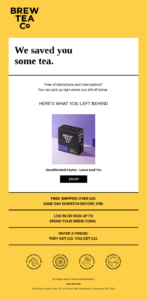
Why we liked it:
- Readers understand the purpose of the emails straight from the subject line.
- They designed a simple, yet effective campaign focused on showcasing the product.
- The copy is clear, persuasive, and to the point.
5. Miro’s onboarding email
A lead just turned into a customer—congrats! Now it’s time to kick off your retention strategy by setting new customers up for success with onboarding emails. This tactic is essential for SaaS and B2B platforms.
Check out how Miro designed one of the emails of their onboarding series:
Subject line: 5 tips to start creating your board

Why we liked it:
- New users can immediately grasp the topic and value of this email from the subject line.
- They provided step-by-step guidance to help users create and organize new boards.
- They placed two CTA buttons strategically to increase click-through rates.
6. Apple’s renewal email
Another great strategy for the retention phase is sending renewal or replenishment emails. Reduce churn by reminding existing customers to renew their subscriptions or restock their products on time. With the right message, you can turn this into a thoughtful email that boosts loyalty.
Here’s one of Apple’s renewal emails:
Subject line: Your Apple Music membership is almost up.
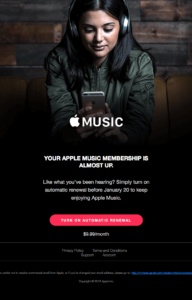
Why we liked it:
- Its design is simple yet impactful, showing a woman enjoying the service.
- The CTA button directs users to automatic renewal, helping increase retention rates.
- The subject line is direct, allowing subscribers to immediately understand the email purpose.
7. Grammarly’s milestone email
Personalization shouldn’t end once you’ve turned potential customers into paying ones. Retention and loyalty require effort, and targeted content should remain part of your strategy. Milestone emails are a great example—celebrating key moments like anniversaries and customer birthdays to show appreciation and reinforce loyalty.
Grammarly, for example, regularly sends progress updates to customers:
Subject line: You’ve reached a new weekly streak milestone!

Why we liked it:
- The copy is catchy, including a fun fact at the top to hook subscribers and keep them reading.
- They shared personalized customer data across different writing categories including productivity, mastery, and even mistakes.
- They included additional resources at the bottom for users who want to dive deeper into grammar.
8. Organics Ocean VIP email
Many eCommerce businesses streamline loyalty programs by offering exclusive deals and other benefits to VIP members. When done well, these initiatives can turn satisfied customers into brand advocates, bringing new people on board through word-of-mouth.
For example, Organics Ocean gave early access and a generous discount for Black Friday to VIP members:
Subject line: 🎩 VIPs First! Black Friday Starts NOW!

Why we liked it:
- The subject line clearly communicates the purpose of the email in a hard-to-skip format.
- The copy highlights the benefits VIP members will enjoy through early access.
- The “Shop 25% Off” CTA buttons create a sense of urgency without sounding pushy.
9. Belgian Boys re-engagement email
The need for customer re-engagement can arise during several stages of the customer lifecycle, especially consideration, retention, and loyalty. When you notice prospects or customers becoming inactive, it’s time to send a win-back email or set up a re-engagement workflow to bring them back on track.
Here’s how Belgian Boys invited their email subscribers back to the feast:
Subject line: We miss you 😭
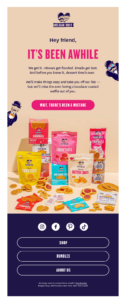
Why we liked it:
- The copy is warm and playful, captivating readers’ attention right from the subject line.
- The “Wait, there’s been a mistake” CTA button is clever and hard to ignore.
- They included product images to remind inactive subscribers of their delicious treats and entice them to return.
Lifecycle Email Marketing Best Practices
If you’re looking for ways to create your first lifecycle email marketing campaigns or improve your strategy, here’s how:
1. Set goals for each lifecycle stage
While the overall goal of each stage is similar—guiding customers down the funnel—the way you achieve it will vary. Every customer journey is unique, even if the stages appear static. Knowing your funnel and ICP inside and out will help you analyze the needs and behaviors of your prospects and customers to set the right goals for each phase.
For example, during the awareness stage, your focus should be on introducing your product to potential customers and leaving a lasting impression through valuable content. But while a lead magnet and freebie might work best for a SaaS business, an apparel eCommerce store might benefit more from investing in engaging social media content.
It’s important to revisit these objectives regularly and brainstorm new ways to help customers move through the funnel steadily and quickly.
2. Use segmentation and automation
Building and sending lifecycle emails without an email automation tool is nearly impossible. These platforms let you manage your audience through segmentation and tags, categorize them effectively, and send them tailored content.
You can also set up automated email sequences triggered by certain actions, such as signups, purchases, or milestones. They’ll help reach your audience at the perfect time, without the need to manually track and schedule follow-ups in spreadsheets.
Most email marketing software also integrates with other platforms, such as CRM and analytics tools. With enriched data and prebuilt workflows, you can send highly personalized emails without wasting time.
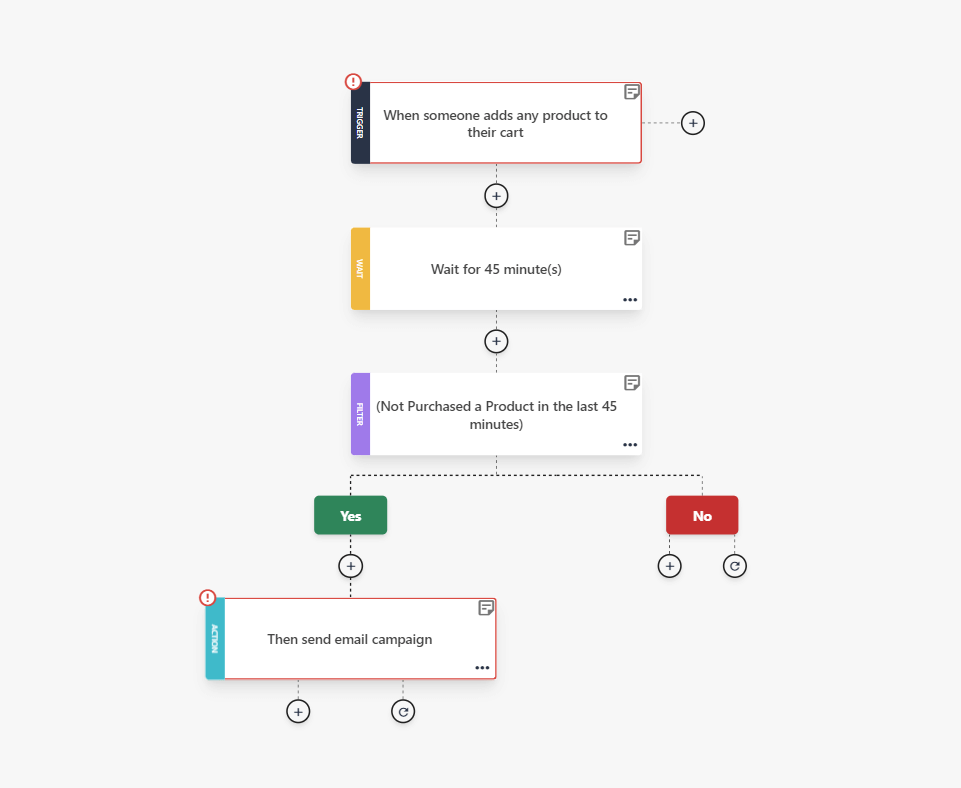
3. Set up transactional emails
Transactional emails are sent to customers or prospects to confirm important actions, such as completing a purchase or resetting a password. Since these emails are triggered by specific user actions, they occur at critical moments in the customer journey. Reassuring users that their transaction was successful is essential.
While these email notifications are usually simpler in design, they’re still valuable brand assets. In addition to including key information, you should incorporate your logo and other brand elements to maintain consistency and trust. Consider adding product images, support contact details, or helpful links to offer a more enhanced experience.
To set up these emails, you can use an API or an SMTP server. Most email service providers (ESPs), like Moosend or Mailchimp, support both options.
4. Make data-informed decisions
To get the most out of a lifecycle email marketing strategy, you need up-to-date customer data. Otherwise, you might confuse prospects and customers with email campaigns they cannot identify with.
Monitor your performance by tracking key metrics such as open rates, click-throughs, and conversions. Also, keep an eye on unsubscribes and spam complaints to gain a more holistic view of your deliverability and audience engagement.
Moreover, add data from CRM and analytics tools in the formula to access more nuanced customer data. A/B testing can always clear the air if you struggle to pick between two email versions.
5. Rethink urgency tactics
You’ve probably heard that adding urgency elements to your emails can always bread glory. However, when it comes to lifecycle email marketing, this tactic can be a bit off the mark. While urgency might help win a few quick conversions and boost ROI, it’s not always effective. Especially since prospects often take time to make a purchase decision.
Instead, focus on offering value and solutions. Try to unveil what your target audience needs on each stage, cut down on fluff, and stick to what matters. Prospects will value it more than a flash sale—unless they’re in the purchase phase, which can be highly attractive.
Make Every Lifecycle Stage Count
After all, It’s not just a customer journey—it’s a marketer’s journey, too. An opportunity to explore what prospects need to convert and what customers expect to stay.
By aligning your email strategy with the needs of your audience at each stage, you’re not just driving conversions. You’re creating meaningful experiences that turn interest into action and satisfaction into advocacy.
Have safe travels.
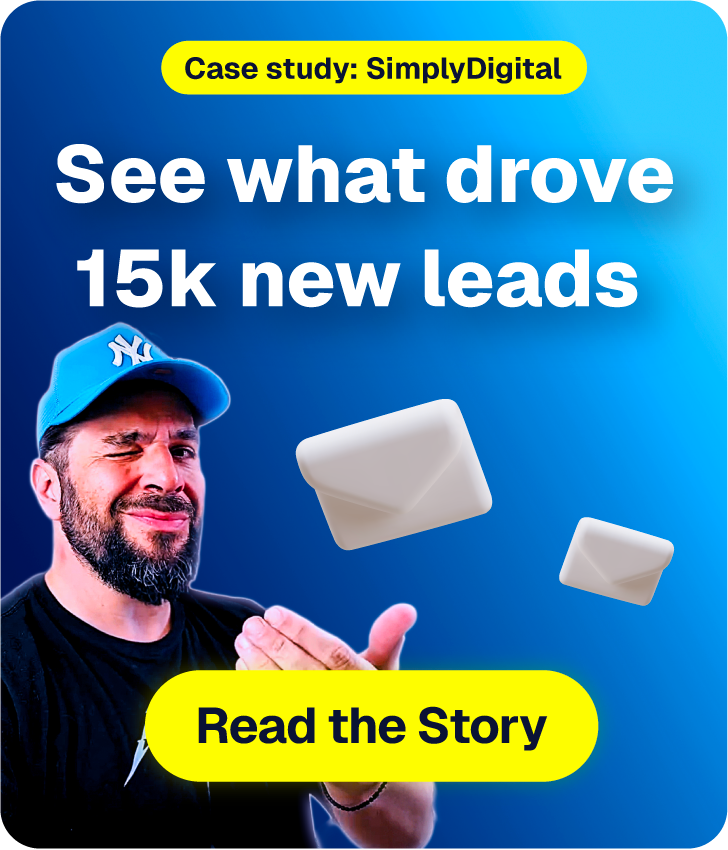
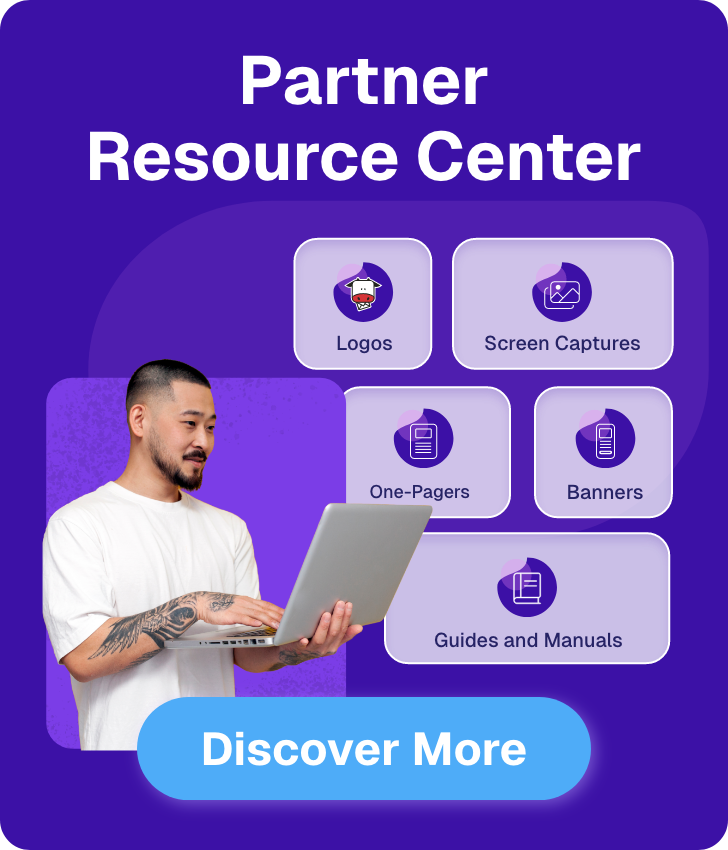

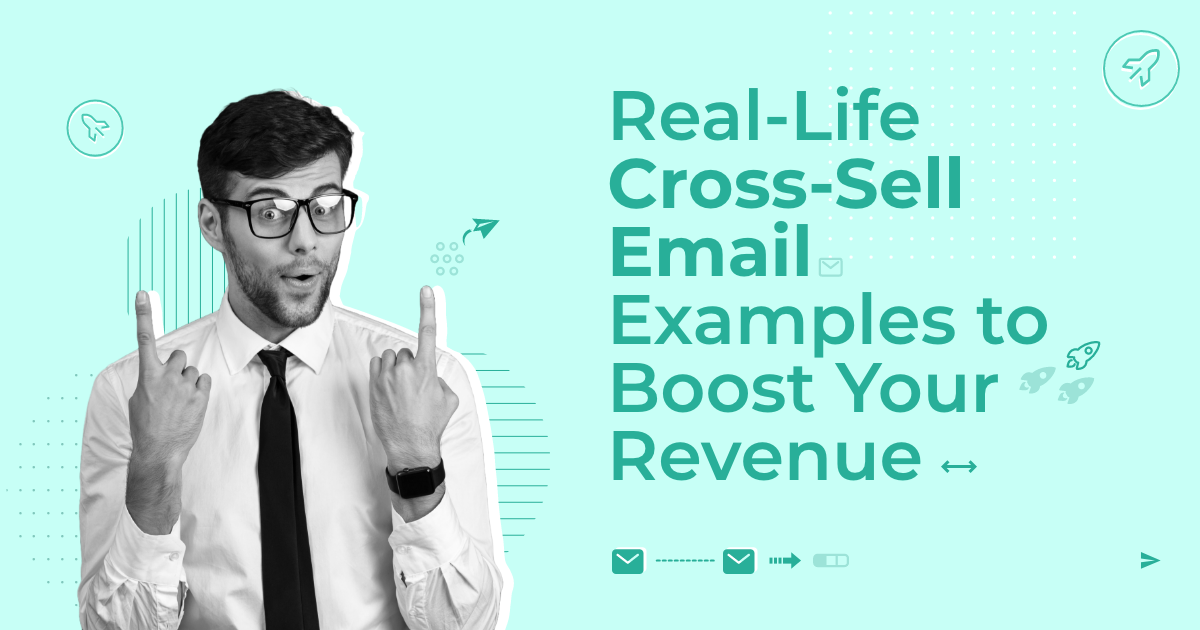
 Published by
Published by
